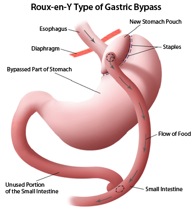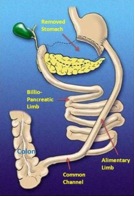Bariatric Surgery Effective For Diabetics
By: Emily Newton
Nov. 14is World Diabetes Day and many people have reason to celebrate. Over 360 million people worldwide are living with diabetes and the number is expected to rise to over 550 million by the year 2030, according to the World Health Organization (WHO). This disease causes millions of deaths each year and costs over 400 billion dollars in health expenditures in the U.S. alone. Diabetes is arguably one of the most serious epidemics of the century and currently there is no cure. However, an article in the New England Journal of Medicine suggests that there may be hope for some sufferers.
Diabetes mellitus is the general term used to describe elevated glucose (sugar) in the blood caused by the body’s inability to produce enough, if any, insulin. Insulin, a hormone produced in the pancreas, is necessary to help move glucose from the bloodstream into individual cells to be used as energy. When glucose is not able to enter the cells, the sugar accumulates in excess amounts in the blood, making the blood hyperglycemic. Type 1 diabetes or “juvenile diabetes,” is a chronic (lifelong) condition of unknown cause, usually diagnosed in children and young adults.
Type 2 diabetes or “adult-onset diabetes,” is also a chronic condition. This form of diabetes is caused by poor diet, a sedentary lifestyle, and obesity and occurs when body fat, muscle, and liver cells are unable to correctly respond to insulin. Sugar builds up in the bloodstream, resulting in hyperglycemia. As previously stated, neither form has a cure.
So what exactly is there to celebrate about a chronic disease with no known cure that only seems to be affecting more and more people each year? On April 26, 2012, an article titled “Bariatric Surgery versus Conventional Medical Therapy for Type 2 Diabetes” was printed in the New England Journal of Medicine. The study included 60 patients between the ages of 30 and 60 with a BMI (Body Mass Index) of 35 or more, who had type 2 diabetes for at least 5 years. The patients were either to receive conventional medical therapy (oral hypoglycemic agents, insulin doses, diet programs, and increased exercise), undergo Roux-en-Y gastric bypass (a procedure in which the stomach is stapled to reduce its size), or undergo biliopancreatic diversion surgery (a procedure in which part of the stomach is removed). After 2 years participants were evaluated on their rate of diabetes remission.
Patients who received medical therapies had zero remission after the two year period, compared to 75% of patients who underwent Roux-en-Y gastric bypass, and 95% of patients who underwent biliopancreatic diversion surgery. Being that 90% of all diabetics are type 2, the results from this study could offer great hope for patients. This is why there is a day to celebrate.
Life altering surgery may seem a far stretch from an event worth celebrating, but considering that half of all type 2 sufferers are obese, the prospect of a new, more effective method to control diabetes is huge news. Of course, any bariatric (obesity) surgery has risks such as pouch problems from overfilling the new smaller stomach, development of hernias, kidney stones, and vomiting. Also, the portions of the small intestine responsible for vitamin and mineral absorptions are bypassed which could lead to deficiencies in individuals who do not follow recommended meal plans. Amid the complications and risks, however, evidence continues to confirm that bariatric surgery offers impressive benefits for type 2 diabetics, even almost a decade after surgery.
Unfortunately for diabetics who aren’t obese, the news of bariatric surgery as a better alternative than conventional medical therapies may seem unimportant. Hopefully one day there will be better news for all diabetics- news of a cure for all sufferers. Until that time, any step towards improving diabetes for sufferers deserves to be celebrated.
Featured image courtesy of:http://care.diabetesjournals.org






